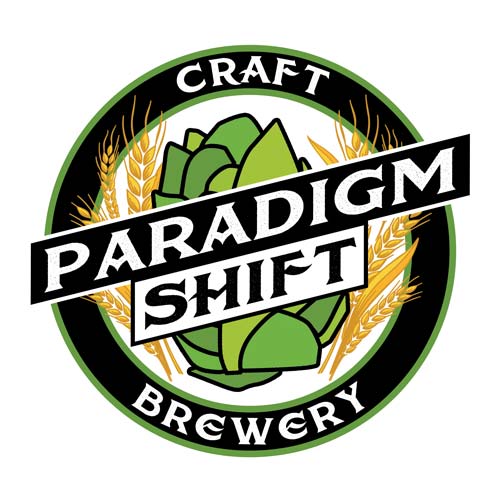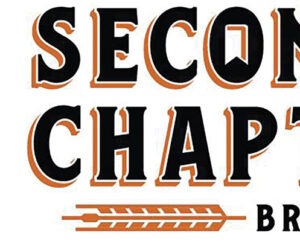Paradigm Shift Craft Brewery
Dear Replicator,
I recently did a tour of Akron-area breweries. I made stops first at Thirsty Dog, Hoppin’ Frog, and Bell Tower breweries. But my highlight of the tour was a Belgian tripel I had at Paradigm Shift Brewing in Massillon, Ohio. The lemon character and smooth drinkability for such a high-ABV beer really stuck with me, and I’d like to brew this beer at home. Can you help me craft a version of my own?
John J. Zajac Jr.,
Dayton, Ohio
This may be a guide to brewing an award-winning Belgian tripel, but the real story lies in how the beer and the brewery came to be.
From Homebrewer to Professional
It all started with the Society of Akron Area Zymurgists (S.A.A.Z.), a popular homebrew club based in Akron, Ohio. A group of people with a common love for craft beer and brewing, S.A.A.Z. brought great local beer minds together to share their knowledge and collectively raise the quality of their homebrewed beers.
The members competed regularly in competition, hoping to gauge their progress as brewers while receiving constructive feedback on their beers. Mike Malinowski, a mid-30s hobbyist, had great success in competition, including winning back-to-back best of show awards.
Often asked when he was going to go professional, Malinowski laughed it off, believing it wasn’t in the cards. He had a full-time career he intended to stick with until retirement. Well, that was the plan until a corporate buyout found Malinowski unemployed at age 55 and unexpectedly at a career (and life) crossroads.
Wasting no time, Malinowski fought through the self-doubt facing any soon-to-be entrepreneur and decided to plunge forward as a brewery owner. The result was Paradigm Shift Brewing Company of Massillon, Ohio, a suburb of Akron.
A Paradigm Shift Happens
“The Paradigm Shift name reflected my career path in corporate America, as a ‘Lean 6 Sigma Blackbelt’,” said Malinowski. “It was all about continuous improvement, such as streamlining processes and eliminating waste. My goal was, and is, to get people to think differently when it comes to beer — to make a paradigm shift — away from mass-produced beers and over to craft.”

Doing it on his own without partners, Malinowski relied on his varied background that included construction and an undergraduate degree in business accounting . . . not to mention over a decade of homebrewing experience. He took his entire retirement fund and invested in himself.
Not only did he accomplish his goal, Malinowski may have set some kind of speed record opening his doors just five months from the day he signed his lease. That included having six beers brewed and ready to serve.
“I had to stay laser focused,” said Malinowski. “I had three beers brewed before my bar was even built and glassware arrived only on the night before we opened. I had help from family and friends to accomplish the buildout in record time. I’ve got a picture of my 101-year-old grandmother sanding a door at one point. Hard work runs in my family.”
It was the competitive spirit of homebrewing that gave Malinowski the confidence to take his hobby to the professional level.
“You look at all the competition at the homebrew level, you had to have your A game to compete,” said Malinowski. “To win medals, you had to be a solid brewer. And what is great is that so many homebrewers went pro in this area that are willing to share knowledge and continue to learn from each other at the next level of brewing.”
Neighbor Girl
One of the award-winning homebrew recipes that Malinowski took to the commercial level was a Belgian tripel called Neighbor Girl.
“There was a girl always walking her dog when I’d be out homebrewing,” said Malinowski. “I got to know her and she’d stop by occasionally for a beer. She told me she loved the Belgian tripel style and asked if I had one. I did, but it had no name, so I called it Neighbor Girl.”
After the whirlwind opening, Malinowski’s laser focus turned to his first major beer competition, just nine months after opening. At 2018’s Great American Beer Festival (GABF), Neighbor Girl came home with a bronze medal. Inspired by first-hand knowledge of European beers during an Army stint in the mid-80s, Malinowski created his own take on the classic Belgian style.
Continental Pilsner malt makes up the majority of the base with a few specialty malts for character. The secret ingredient to this 8.2% ABV, 3.7 SRM tripel is a heavy-handed addition of Belgian candi sugar, accounting for 12.7% of the overall grist. Neutral Magnum is used for bittering, then a combination of Saaz and Lemondrop™ hops provides a soft, floral, citrusy, lemon pepper essence. Ardenne yeast brings it all together to create an authentic Belgian classic made stateside with a character that makes some swear that lemon zest was added.
Neighbor Girl is best served in a Belgian goblet at 45–50 °F (7–10 °C), paired with any lemon-based pasta dish, such as shrimp scampi. Now you can brew your own and share it with your favorite neighbor girl.
Paradigm Shift Craft Brewery’s Neighbor Girl Tripel clone

(5 gallons/19 L, all-grain)
OG = 1.070 FG = 1.009
IBU = 29 SRM = 4 ABV = 8.2%
A classic, easy-drinking, high-alcohol Belgian tripel with a soft, elegant lemon pepper essence.
INGREDIENTS
11.5 lbs. (5.2 kg) Belgian Pilsner malt
0.4 lb. (181 g) Belgian white wheat malt
0.4 lb. (181 g) biscuit malt
1.5 lbs. (0.68 kg) clear Belgian candi sugar
6.6 AAU Magnum hops (60 min.) (0.5 oz./14 g at 13.25% alpha acids)
1 oz. (28 g) Saaz hops (0 min.)
1 oz. (28 g) Lemondrop™ hops (0 min.)
Wyeast 3522 (Ardenne Ale), White Labs WLP550 (Belgian Ale), or SafAle BE-256 yeast
¾ cup corn sugar (if priming)
STEP BY STEP
Mash in using a fairly thick mash and achieve a single infusion mash temperature of 150 °F (66 °C). If needed, add lactic acid to ensure a mash pH of or near to 5.4. Mash for 90 minutes or until converted. Recirculate and sparge. Collect 7 gallons (26.5 L) of wort in the kettle. Boil for 90 minutes, adding bittering hops at 60 minutes. If you choose, add a yeast nutrient and a clarifier such as Irish moss or Whirlfloc® with 10 minutes remaining, along with the candi sugar. At knockout, add the Saaz and Lemondrop™ hops then begin to whirlpool and allow it to spin down for a total of 20 minutes.
Cool quickly to 66 °F (19 °C), pitch yeast and oxygenate. Primary ferment for four days at 68 °F (20 °C) and then let it free rise to finish out. This should add extra pleasant esters in the finished product.
Total fermentation should take about two weeks. Crash cool, then carbonate to 2.6 volumes or prime and bottle condition.
Paradigm Shift Craft Brewery’s Neighbor Girl Tripel clone
(5 gallons/19 L, partial mash)
OG = 1.070 FG = 1.009
IBU = 29 SRM = 4 ABV = 8.2%
INGREDIENTS
6 lbs. (2.7 kg) Pilsen dried malt extract
1 lb. (453 g) Belgian Pilsner malt
0.4 lb. (181 g) Belgian white wheat malt
0.4 lb. (181 g) biscuit malt
1.5 lbs. (0.68 kg) clear Belgian candi sugar
6.6 AAU Magnum hops (60 min.) (0.5 oz./14 g at 13.25% alpha acids)
1 oz. (28 g) Saaz hops (0 min.)
1 oz. (28 g) Lemondrop™ hops (0 min.)
Wyeast 3522 (Ardenne Ale), White Labs WLP550 (Belgian Ale),or SafAle BE-256 yeast
¾ cup corn sugar (if priming)
STEP BY STEP
Before you get started, separately pre-boil and chill about 3.5 gallons (13.25 L) of water so you can add that to top up the wort later.
To get full access to the sugars bound up in the malt’s starch, a partial mash is needed before adding the extract. We will use 1 lb. (453 g) of Pilsner base malt to help convert the white wheat and biscuit malts.
Using about 1 gallon (4 L) of water, achieve a single infusion mash rest at 150 °F (66 °C). Insert the crushed grains inside a mesh bag for easy removal later. Mash for 60 minutes or until converted. Remove the grain bag, allowing the liquid to drain out. Do not squeeze the bag to avoid leaching tannins into your wort. Add water to create 3 gallons (11 L) of wort in the kettle. Next, raise to near-boiling temperatures, then remove pot from heat and slowly stir in half of your extract until thoroughly dissolved. Return to the heat source and raise to boil. Boil for 60 minutes.
Add bittering hops at the beginning of the boil. With 10 minutes remaining, remove again from the boil and add the rest of the extract and the candi sugar. If you choose, add a yeast nutrient and a clarifier such as Irish moss or Whirlfloc®. At knockout, add the Saaz and Lemondrop™ hops then begin to whirlpool and allow it to spin down for a total of 20 minutes.
Cool quickly to 66 °F (19 °C) and transfer the wort to your fermenter, topping up to a volume of 5.5 gallons (21 L). Pitch yeast and oxygenate. Primary ferment for four days at 68 °F (20 °C) and then let it free rise to finish out. This should add extra pleasant esters in the finished product. Total fermentation should take about two weeks. Crash cool, then carbonate to 2.6 volumes or prime and bottle condition.
Tips For Success:
There are many different colors of candi sugar. Be sure your candi sugar is clear to maintain the color of a typical Belgian tripel. You don’t want a strong flavor contribution from it.


